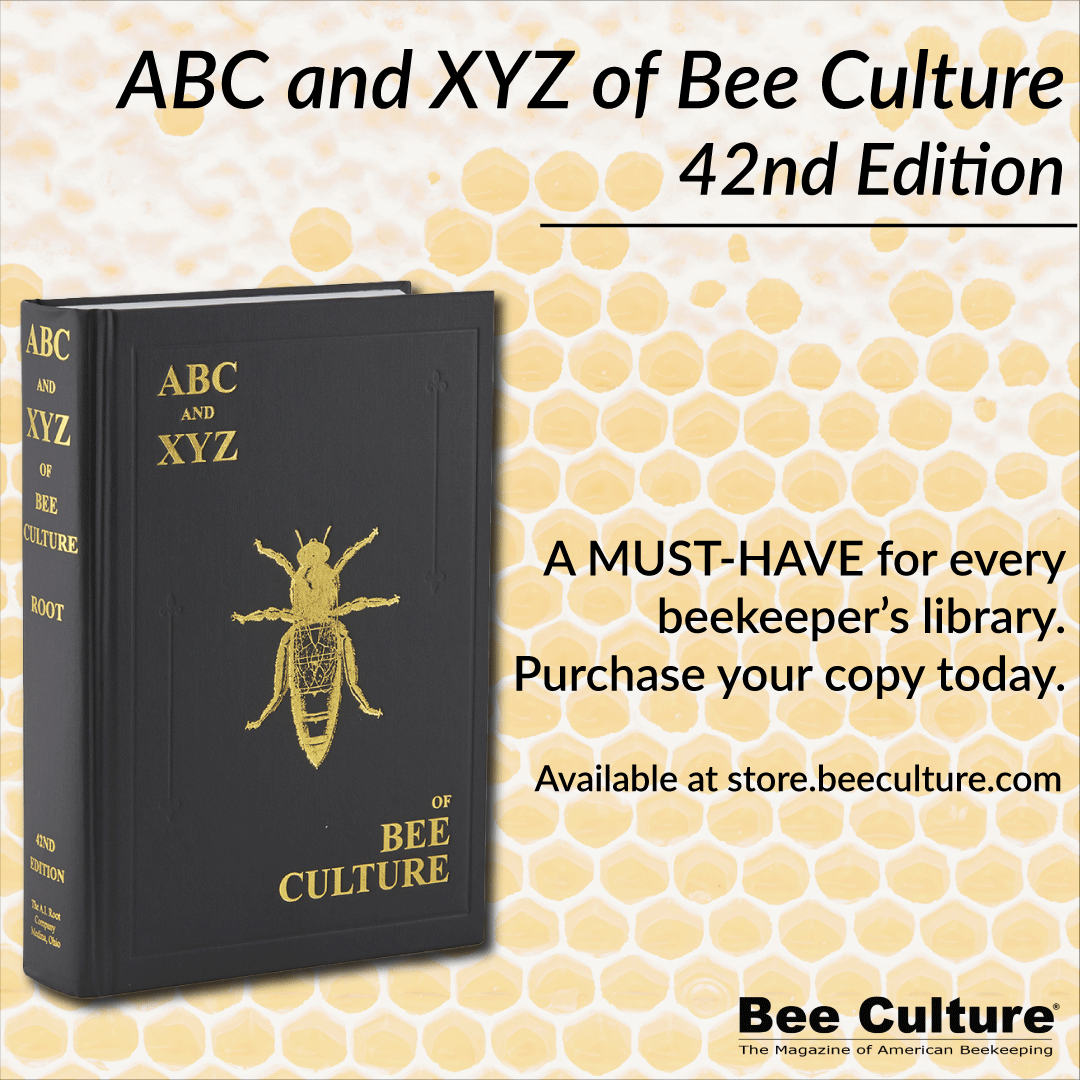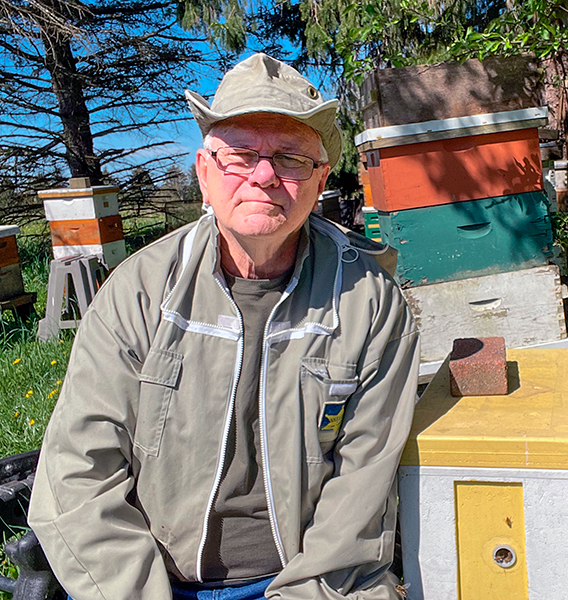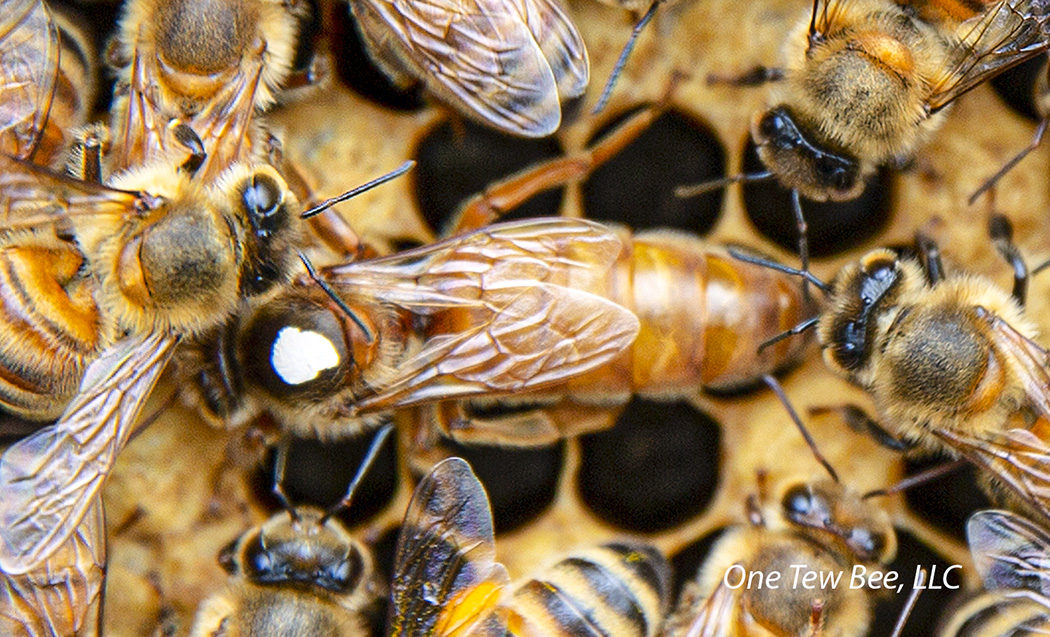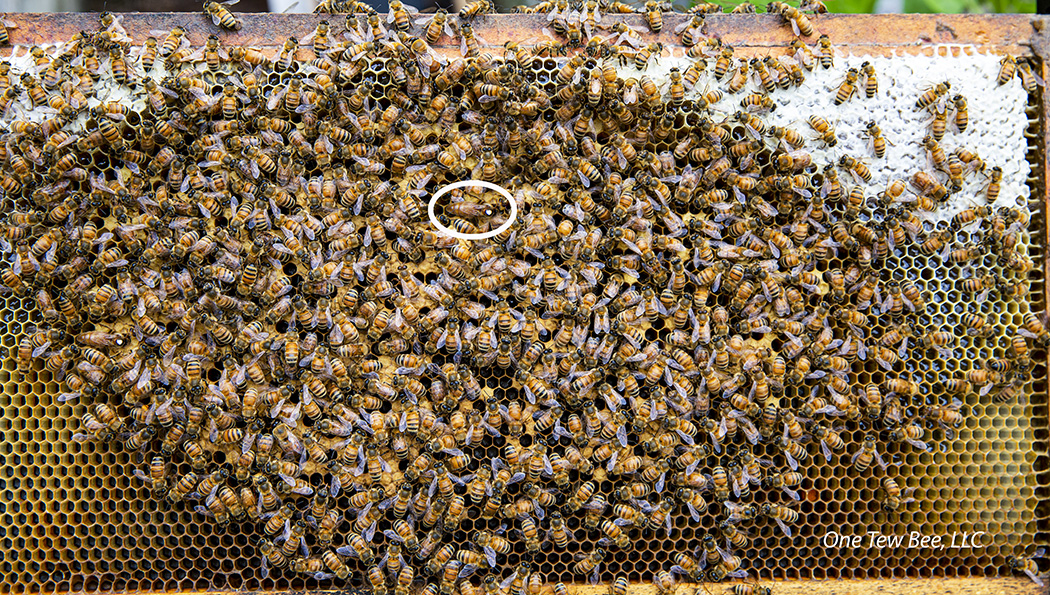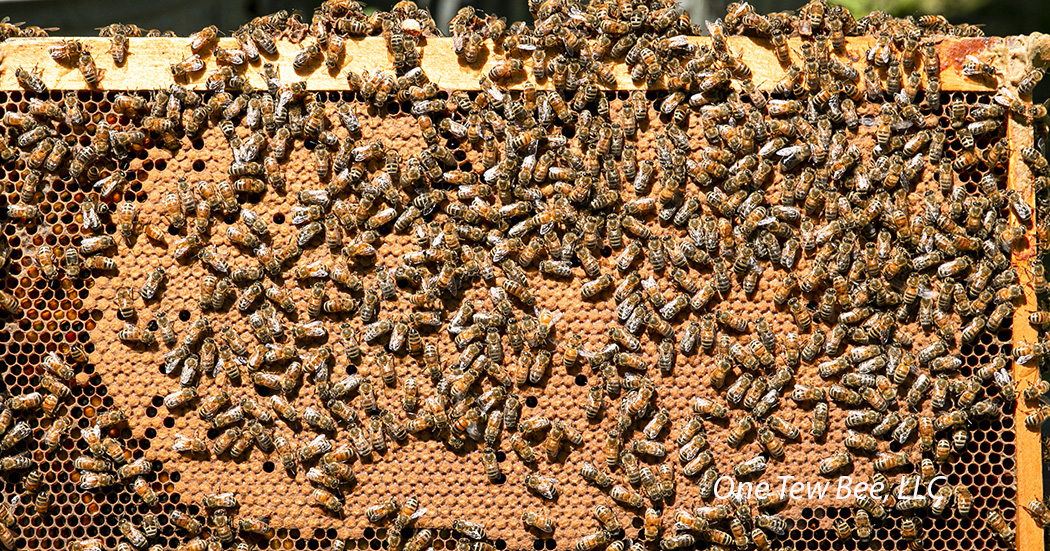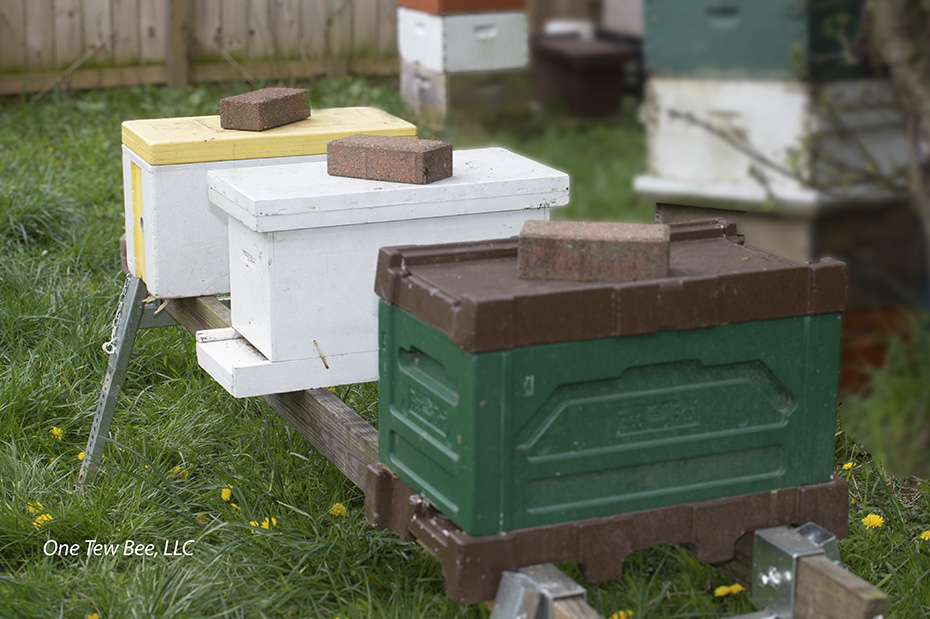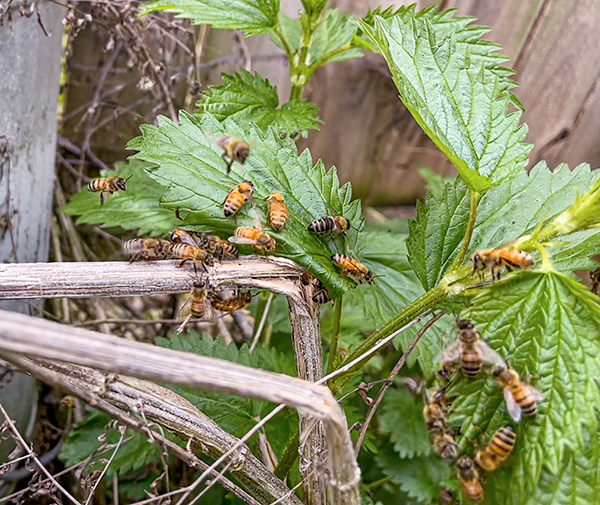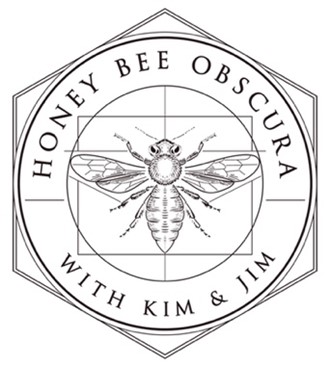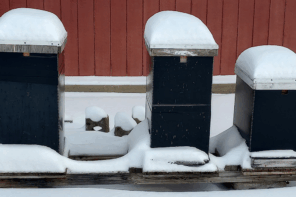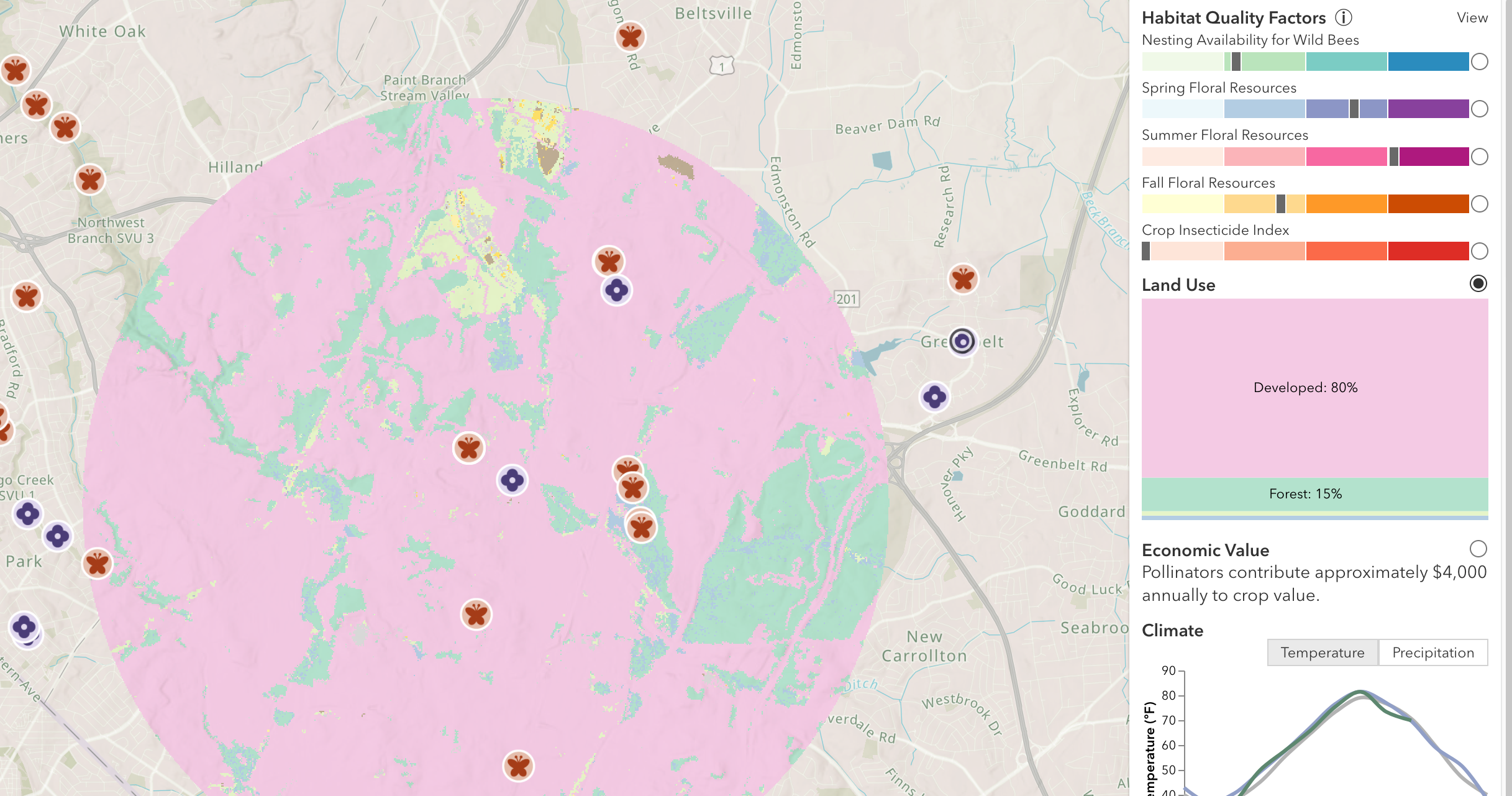A novel experience that only adds to my indecision
James E. Tew
Any time and no time
Any time and no time are both common times to write about adventures with package bees. Packages must be ordered months in advance. So, I should write about package bees in December? Right? No, that seems early. Well, maybe I should write about them in late April when they are already here. Such an article would seem to be too late to be much help then. The packages are already out in the garage and “all systems are a go.” So, apparently the best time to write and discuss package issues is just after the releasing event has happened? It is generally too late to get packages now, so writing about installing them at this point seems like yesterday’s news. But that’s what I’m writing about here. Maybe that’s why my comments feel a bit like “leftovers.”
First and foremost – package queens
The queen is every bit as important as the package bees to the new beekeeper. Those of us who are older in beekeeping and have other colonies and some extra equipment can possibly recover from package mishaps, but new beekeepers, starting a new package colony, absolutely must have both bees and a living queen.
It’s a quiet fact. A dead package queen is a true headache – for any beekeeper. You will need to decide just how large of a headache is at hand. If you bought at least two packages, your headache may only be an inconvenience. Most likely, after combining with your other package, you’re about to have a six-pound package swarm with a new queen to head it. Within just a few weeks, that double colony’s population will explode. So, in just a short time, you can split it back into two colonies. One would hope that, by then and without much fanfare, you have procured a new (living) replacement queen.
For those of you who only bought one package, and the package supplier is maybe something like forty miles away – that’s going to be a bigger headache. Indeed, even if you can make the trip, does the supplier even have any extra queens? The immediate problem for the queenless package bees is that they will drift toward developing a laying worker problem if a frame of open brood – at least – is not provided to them within, maybe, five days or so.
In this situation, the confusion lurks in the details. What to do with this new swarm package that has no queen? You have three choices: (1) Get a queen from somewhere, (2) Get some open brood – from somewhere – into the queenless colony, or (3) Combine the queenless bees with a queenright colony. There is a fourth option, but it is distasteful and does not have a happy ending.
But in this article, this is one point where I want to get to… “What if I have a queen that is alive and accepted within the new colony but is producing a disappointing brood nest population?” I am not trying to convince you that I am a package bee-installing-marvel, but in my bee life, I have had the opportunity to install a lot of packages. I have found that, in a strange way, a dead queen – or maybe a queen that just flies away when you release her from the shipping cage – or maybe a queen I accidentally crushed in the colony – is an easier problem than having a marginal functioning queen that is established within the colony.
If your package has no queen – simple problem – you must get another queen or combine the colony with another. But if the colony has a marginal queen on the job, what then? “Well, I’ll give her more time.” And then a bit later, “Well, I will give her even more time.” Yet, all the while, the Spring season is passing. Just like a natural swarm, this colony, headed by a marginal queen, needs to build up population and gather honey stores. Only you, the beekeeper, can decide when enough is enough with a marginal queen. I can tell you that it will be a very uncertain call.
Briefly explained, what is a marginal queen?
No matter where she is, a marginal queen is one that is not getting the job done or only barely getting the job done. A productive queen in the early Spring should have brood frames everywhere – full, organized frames of developing rather than (mostly) full frames of brood. My marginal queen had spotty patterns about the size of my hand that were haphazardly positioned here and there. Also, she was producing some drones. Not too many, but why produce drones at all if there is a paucity of workers being produced. Her output was not good, and her brood balance was off. I kept telling myself, “I need to replace this queen.”
So, ask me, “Jim, why did you not replace her?” Reason #1 – getting a replacement queen is just as contorted a process as I described above. I kept thinking I would, but I just never made the trip. Reason #2 – and ironically probably more important than Reason #1, I need to write here that she was a gorgeous queen. She was regal, and calm on the comb, and was endowed with a fully formed large, orange abdomen. Though her brood output was marginal, her personal appearance was superb. If nothing else, she was photogenic.
All queens are not great queens
When talking or writing about queens, I have frequently admonished others to consider that fact – all queens are not great queens. Some of our queens will just be average – or even below average. I had that adage in mind as I kept justifying why I didn’t do something with this underpowered queen.
Time passed. I was distracted by other events in life. Somewhere during the Summer months of 2021, I had a quick look to see if the lagging colony had any hope of surviving the upcoming Winter. Upon looking in the colony, I did not expect to find this. During my absence, and for whatever reason, the underperforming queen had come into her own. She had brood everywhere and her slovenly brood pattern had improved to the point of perfection. For me, it was a very pleasant surprise. I’m the guy who always writes articles about the things that go wrong. I had every intention of replacing this queen and – for whatever reason – I just didn’t. No matter. This colony will die in the Winter. It seems that they always do. So, Jim, don’t get too excited.
The Winter season of 2021
My Ohio Winter of 2021-2022 was typical as was my bee colony die-off. I generally lose about forty percent of my wintering colonies. As Winter ended, I was amused to note that one of my survivor colonies was the one that had the dubious queen from the previous Spring.
Pessimistically, I told myself that this colony was not home yet – but it had made it much longer than I expected. I just could not let myself bond with this unusual colony. But it kept living and living. The Spring turned very cold again. “Well, there goes that colony.” As the weather warmed, I had a look, and it was still alive. This package colony had surprised me, surprised me again and then again, all from a queen I meant to replace.
The Spring season of 2022
If you are still reading, you know where this ramble must be going. The Spring season had clearly arrived, and this colony could safely be said to have survived the previous Winter when others had not. The little queen that barely could, had just kept going and going.
True story – as I stood there watching the intensive activity coming from this colony, a large swarm began to take flight. At first, I just thought the activity was intensive play flights, but it quickly became clear that this was a 1:00 pm swarm departing. “Well, there goes my special queen,” I mused.
The activity from a swarm always unnerves me. Neighbors and the community in general watch me as I watch the bees. I am not in control of this situation. I fully expected the swarm to “pitch” high off the ground and taunt me for days. Nope. After a short hour, the whole gang returned to the parent hive. I had been given a reprieve, and I immediately cleared my calendar for the next morning. This colony was definitely going to swarm again.
From one, now four
Swarm control – this was what I had written about last year when I droned on and on about my plans for keeping smaller colonies. I lived with the indignity of writing for you that I would need to accept lost swarms from my downsized colonies. Now the swarming was happening from a colony headed by a queen that I meant to replace – a colony that I thought would have been long dead. I just could not stand by as this swarm happened.
The next day at mid-morning, I was on the job, veiled up with smoker fully fired. I was brutal. I divided that colony down to nothing. The parent colony was in two deeps. Swarm cells were common. Try as I might, many ripe cells were destroyed as I pulled brood frames from the hive.
I made three five frame splits. Each split got three to four frames of brood, and I made certain that each split got some of the ripe swarm cells1. I left the parent colony with a single paltry frame of capped brood. That downsizing must have been a shock for that prosperous colony.
And yet… There’s more
I returned about an hour later to see how things were settling. For the most part, the nucs looked pretty good. Hmmm, they were showing some flight activity. Bee Culture readers who have done this craft for a while would know that most of those active bees will fly back to the parent colony. The nucs would be left with young bees and even younger bees that hatched from capped brood left in the split. Few surprises on this part of the saga but wait – there’s more.
A small clump of bees
The parent colony was reasonably agitated. Why would it not be? I had just divided it into obliteration. But still, it was acting too odd. I don’t have the words to describe the odd feeling. It was just a vibe.
As I neared the colony, there was a golf-ball sized clump of bees about three feet from the colony on a low bush. Yep, the queen was right in the middle of that little bee clump. Go ahead – ask. I have no idea why she was out. Did I bump her from the frames as I pulled them out? Possibly? Being “swarmy,” did she fly from the frames as I removed them? Possibly. Was she out already when I started the process? Possibly, but that is not my option of choice. Readers, bottom line, I don’t know why she was out of the parent colony.
Experienced beekeepers have these moments, too. I grabbed the queen before she took off (hence no photos of her in the small cluster). Then with my non-dominant hand doing all the clumsy work while gently holding the queen in the other, I dashed to my barn to try to find a cage. I caged her and put her back into the colony.
Why cage her?
If she was the queen from that colony, why cage her? It was unusual to find the queen outside the colony. I have already admitted that I don’t have a precise answer to that specific question. While it appeared to be the same queen, but “what if?” At that instant, I relived the following memory.
I had been keeping bees for exactly one year. Everything beekeeping was new and exhilarating. I loved the craft. Every day – as soon as I could finish my student employment work – I dashed to the edge of town to my bee yard.
On one afternoon in question, I arrived to find a nice swarm hanging from a sagging tree limb just above one of my three colonies. I had no equipment, and I had no experience. I had nothing. Not wanting to lose the swarm, I made the decision to clip the limb and shake the swarm directly back into the colony from whence it came. Except “whence” it had not come from that colony. Readers, I put a three pound swarm directly into another colony. I opened that unsuspecting colony and just shook the swarm in. To this day, the bee fight I caused remains one of my largest. I had no smoke. I had no way to stop the carnage. It was brutal. My mismanagement killed a lot of bees that day.
That, Bee Culture readers, is why I caged the queen. I was just being careful. From all indications, she came from that colony… but just in case, I caged her. Three days later, I released her.
At this point…
Right now, I have the potential of having four colonies from a queen that I meant to replace. My experience with this queen will only add to my confusion and indecision when I make future queen-replacement decisions. Obviously, this queen proves that sometimes a marginal queen needs another chance. But when and for how long?
Isn’t that some of the enjoyment of beekeeping? Just doing the best you can. Best guesses. Trying to win more than you lose. I hesitated when I thought the queen needed replacing. I was there when the colony swarmed. I made the colony splits. I noticed the ball of bees around the outside queen. In this situation, I did more right than wrong. Good job, Jim. For now, this story has a happy ending. I truly appreciate you reading my pieces. Thank you.
Dr. James E. Tew
Emeritus Faculty, Entomology
The Ohio State University and
One Tew Bee, LLC
tewbee2@gmail.com
http://www.onetew.com
Weekly podcast at: www.honeybeeobscura.com

